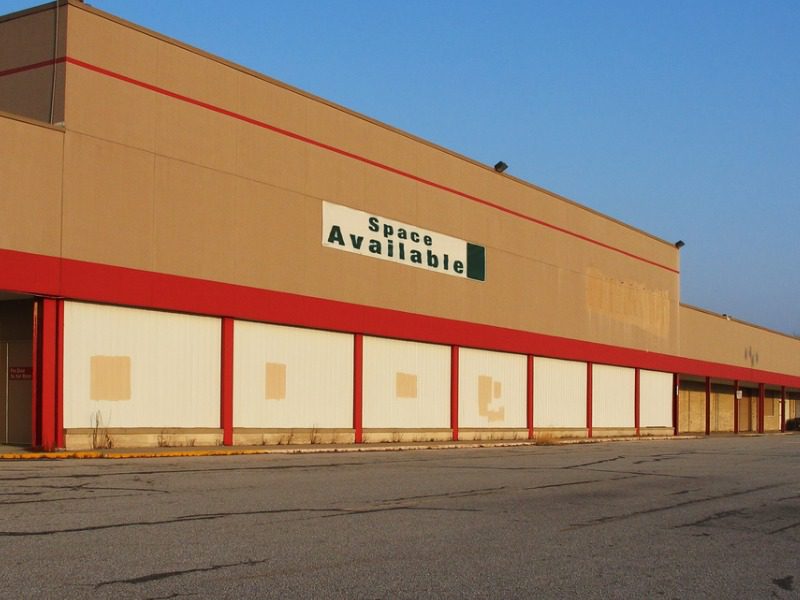Vacant retail and office space: How to advise clients on this post-pandemic trend

With office vacancy rates rising in many Canadian cities, brokers need to coach building owners on the need to manage their insurance obligations.
A 2023 Q1 report from commercial real estate firm Coldwell Banker Richard Ellis (CBRE) Canada notes, “The overall national office vacancy rate increased to 17.7% in Q1, with slight market softening noted in both the downtown and suburban segments.”
But building owners mustn’t view lower occupancy as cause to drop or reduce insurance coverage.
“Coverage is still needed by the real estate owners not only to protect their own financial interests but also the financial interests of their…payees (e.g., mortgagees) in the event of a loss,” said Dorothy Aarons, senior vice president and senior account executive at Aon’s Risk Management Practice.
“Though usage may be less with partially occupied buildings, [they] have central systems for heating and cooling, and equipment breakdown insurance is needed to protect against accidental breakdown of boilers and pressure vessels.”
What’s more, tangible assets must be protected from direct damage and the subsequent business income loss.
“As long as there is foot traffic, people can still slip and fall on premises and owners need to be protected against the legal liability owed to these third parties for the resulting bodily injury or property damage,” Aarons said.
Real estate’s bright side
Although the office sector is slumping, e-commerce growth has sparked demand for industrial real estate, Aarons says.
“Our commercial clients who have industrial real estate are doing very well,” she tells CU. “E-commerce is driving up the demand for warehouses. We also see more sublet in the office sector [in part] because tenants do not want to break their leases because of the penalties they may experience.”
Alongside vacancy rates, CBRE Canada’s report noted sublet listings inched up in 2023 Q1 to 3.4% of existing inventory. The sublet numbers have increased nationally for three consecutive quarters and the largest 2023 Q1 increases were in Toronto and Ottawa.
Owners of suburban commercial space are seeing a trend toward converting dying office parks into warehousing and logistics spaces for e-commerce operations. Aarons suggests that trend could make its way to downtowns as office vacancy rates climb.
“There is an excess of office sector space; those buildings are going to be repurposed,” she says. “The U.S. has reported that by the end of this decade, there’s going to be 330 million square feet of office sector vacant space.”
Protecting assets
These stats suggest some office structures could eventually wind up empty. And, since vacancy can invite trouble, brokers need to remind building-owner clients that they remain responsible for those assets.
“It will be important to maintain a security presence to mitigate against vandalism and trespassing – vacant properties attract idlers, trespassers, criminals and arsonists, and should a fire start on premises, notification to the fire department may be delayed,” said Aarons.
“The National Fire Protection Association has shown that a significant number of fires occur in vacant buildings – and 50% of the fires occurring in vacant buildings are intentionally set. People can die. Firefighters are injured. That’s a significant risk.”
She recommended owners of partially or fully vacant buildings place and monitor cameras and initiate security patrols. Aarons added owners should inform brokers if a property is vacant so the broker can tell the insurance company.
“The challenge [is making sure owners] know their obligations to ensure that the building is safe,” she said. “Plus, owners have their assets in these buildings and critical to the insurance process is accurate reporting of values. Because of economic inflation, the total insurable value of things [like equipment] may have increased on a year-over-year basis.
“Owners should therefore focus on the amount that it would take to replace the asset when reporting values to their brokers.”
Other risks
Further, retail diversification has created new exposures and insurance needs.
While businesses saw COVID-19 lockdowns reduce risk exposures linked to store visits, they acquired new online risks.
“They have to ensure they have their cybersecurity measures in place. And that includes having a cyber liability policy,” said Aarons.
“We have seen significant demand in the cyber liability exposures for companies [and an] increase in cyber liability insurance purchases. There are some businesses that didn’t even have a cyber liability policy in place before the pandemic. There are so many new risks evolving.”
She added preventative risk-control measures must also be in place “such as multifactor authentication to protect remote network access which has increased significantly, phishing awareness training to educate employees on spotting malicious emails, an endpoint detection and response solution to detect and quarantine ransomware/malware and regular segregated encrypted and immutable backups.”
Feature image by iStock.com/IDFK303



